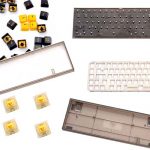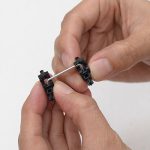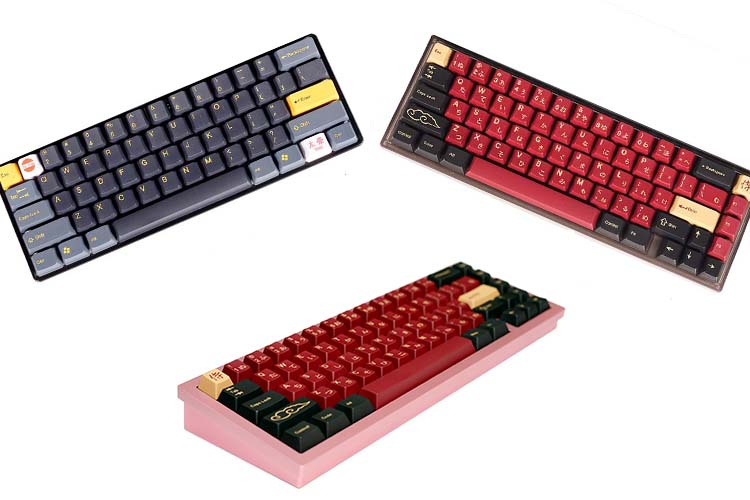
Mechanical keyboards have exploded in popularity over the past couple of years. You can practically see them in any desk setup these days.
However, what you may not know is that the concept of mechanical keyboards isn’t new. In fact, mechanical keyboards have been around since the late 80s and used to be the only option available to consumers. So what exactly happened with the keyboard market, and why did mechanical keyboards disappear?
In this article, we will be answering that question. We will be going over the history of mechanical keyboards from their early days to their place in today’s market. And by the end of this article, you should have a deeper appreciation for mechanical keyboards.
Before the Age of Computers

Before the personal computer was invented, the primary tool that was used for text processing was the typewriter. This device set the stage and is the predecessor of modern computer keyboards.
In a nutshell, typewriters had a very distinct and tactile feel. They are very satisfying to type on since each key provides physical feedback.
Of course, since this was very old technology, they were prone to issues. The most common one was that typewriters often get jammed when typing too fast.
This is how the QWERTY layout came to be. It helped create a layout that puts commonly used letters closer and makes you type slower to prevent the mechanical arms from jamming.
The Modern Personal Computer Keyboard
IBM Model M (Buckling Spring Switch)

When modern computers started getting popular, the main input device that was incorporated was based on the typewriter. There were different switch types that were experimented on during the 1960s and 1970s. However, none of them captured the tactile and satisfying feel of typewriters.
This was until IBM developed and patented the buckling spring technology in the late 70s. Basically, pressing down on the spring-loaded switch caused two pieces of metal to touch, similar to how modern mechanical key switches work.

The main reason why the buckling spring switch technology was successful was that they were very durable, accurate, and satisfying to type on. The most notable models that used the buckling spring switch technology were the IBM Model M and the IBM Model F, which came with the original IBM PC in 1980.
The IBM Model M was so good that enthusiasts still love it today, even after more than three decades. It is considered to be the father of modern mechanical keyboards.
Cherry Switches
IBM’s mechanical key switch design proved to be very successful. So naturally, competitors rose to try to match and outdo IBM. One of these was the German company Cherry, whom you may recognize as one of the main manufacturers of today’s modern switches.
What made Cherry switches unique was the fact that they had different models that produced different kinds of typing experiences. Additionally, they proved to be more durable than competing switch types back in the 1980s.
The Membrane Keyboard Revolution

As computers became more accessible and available to the mainstream audience, manufacturers looked for ways to cut down the manufacturing costs. And unfortunately, one of the components that received a downgrade was the keyboard.
Since mechanical switches were too expensive to make, manufacturers started using alternative technology to produce what is now known as membrane keyboards. Unlike mechanical keyboards, membrane keyboards are not utilizing individual key switches. Instead, they are using a thin pressure-sensitive membrane under the keys for key actuation.
These keyboards were nowhere as high-quality as the previous generation mechanical keyboards were. They didn’t have the signature tactile feel, nor did they have the premium build quality.
However, membrane keyboards satisfied the manufacturer’s primary objective, which was to make the manufacturing process significantly cheaper. And also, membrane keyboards were durable enough for general use.
Additionally, users at the time saw membrane keyboards as a positive thing. Compared to older mechanical keyboards, membrane keyboards were much smaller and lighter. And overall, they were more convenient to use.
For the next decade, membrane keyboards were the only option that was available for general consumers. Of course, companies such as Cherry still continued manufacturing Cherry switches. But at this point, mechanical keyboards were clearly a thing of the past and had no place in the modern world.
The Return of Mechanical Keyboards

The personal computer continued to advance and become successful throughout the 2000s. Almost every household and professional workspace had a computer in them. And with the creation of the internet, the digital age was born.
The rise of the internet helped enable many things. However, one of the fields that received massive advancement was the world of gaming. The internet allowed players to play and interact with other players who were not physically in the same room.
This gave rise to popular multiplayer titles such as Counter-Strike. It was during these years that the concept of professional competitive gaming started to become viable.
By the latter part of the 2000s, professional competitions were already getting very popular. These events prompted the rise of gaming peripheral companies such as Razer and Logitech.
These companies started innovating and presenting new ideas with the mouse and keyboard to help players play at their best. And it was at this point when these companies brought back a concept that was abandoned in the late 90s. By 2010, the modern mechanical keyboard was born.
These early mechanical keyboards primarily utilized Cherry’s mechanical switches and were advertised as superior keyboards. After a few years, other companies started taking notice and updated their offerings to include mechanical keyboards.
The Expiration of Cherry’s Mechanical Switch Patent
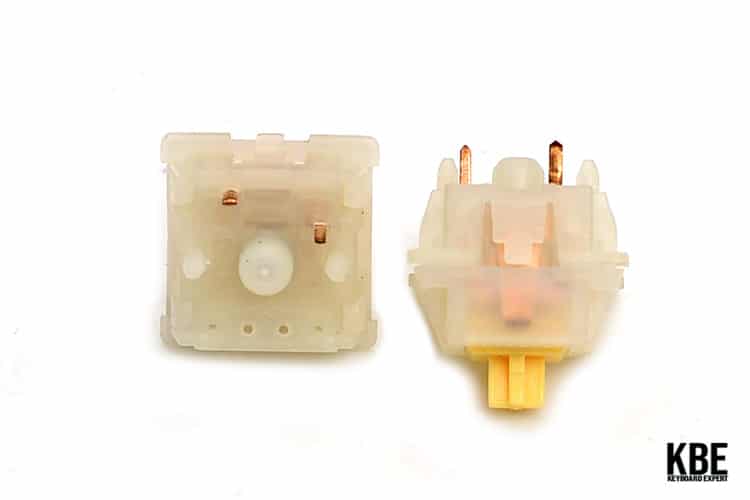
The momentum of mechanical keyboards did not stop. Even after just a few years, mechanical keyboards proved that they were far better than the offerings at the time. Most professional Esports organizations started switching to mechanical keyboards.
The only problem was that mechanical keyboards were very expensive. Also, there wasn’t a lot of variety that was available at the time. The only key switches that you could get were the ones that Cherry offered.
Also, the only keyboard brands that offered mechanical keyboards were gaming brands or very premium brands such as Filco and Ducky. However, these all changed when Cherry’s mechanical key switch patent expired in 2014.
This event single-handedly revolutionized the entire mechanical keyboard scene. This was because other manufacturers were now free to develop their own switches. Brands such as Logitech and Razer quickly developed their own switch types.
However, other brands such as Gateron and Kailh came into the market during this period. Most of these new switches were mostly clones of the Cherry switches that were available at the time. However, over time, these brands evolved and helped create some of the most beloved switches today, such as the Gateron Milky Yellow and Gateron Ink Black.
The Custom Mechanical Keyboard Hobby
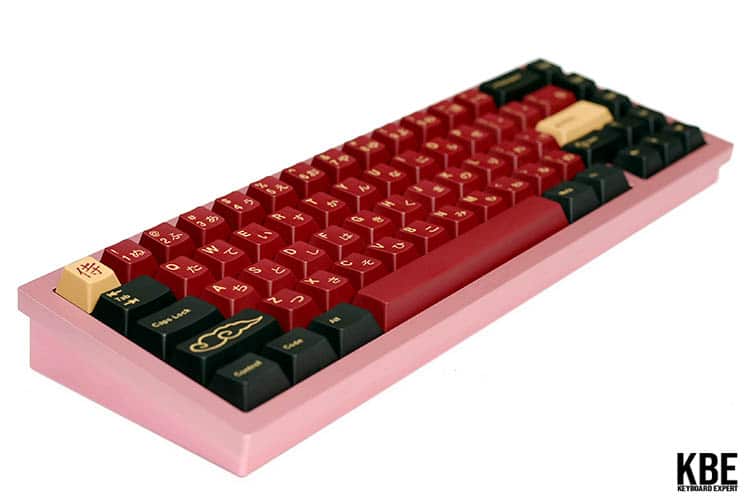
After Cherry’s patent expired, there were no more boundaries for mechanical keyboards. However, switches were not the only thing that changed. Even the mechanical keyboard options also started to grow. And thus, the concept of custom mechanical keyboards was born.
As its name implies, the user can customize the look and feel of their mechanical keyboard. Anything from the exterior shell to the key switches can be customized. We also started seeing different mechanical keyboard sizes and form factors such as 75%, 60%, and many more.
Also, these custom keyboard parts were not manufactured by big gaming companies. Instead, they are offered by smaller brands and designers and are usually bought through a limited group buy.
The mechanical keyboard scene is now vastly different from what it used to be in the past decade and in the 1980s. However, mechanical keyboards are arguably better than ever.
It is unknown where mechanical keyboards will go from here. They can continue to get better or even be surpassed by a new key switch technology in the future.
But one thing is for sure. Right now, mechanical keyboards are the best type of keyboards in the market. And they are here to stay.

The KBE team is dedicated to sharing our knowledge and creating useful resources about computer keyboards. This article was written as a team collaboration, combining our knowledge and years of experience using, building and modding keyboards. Meet the team here.

